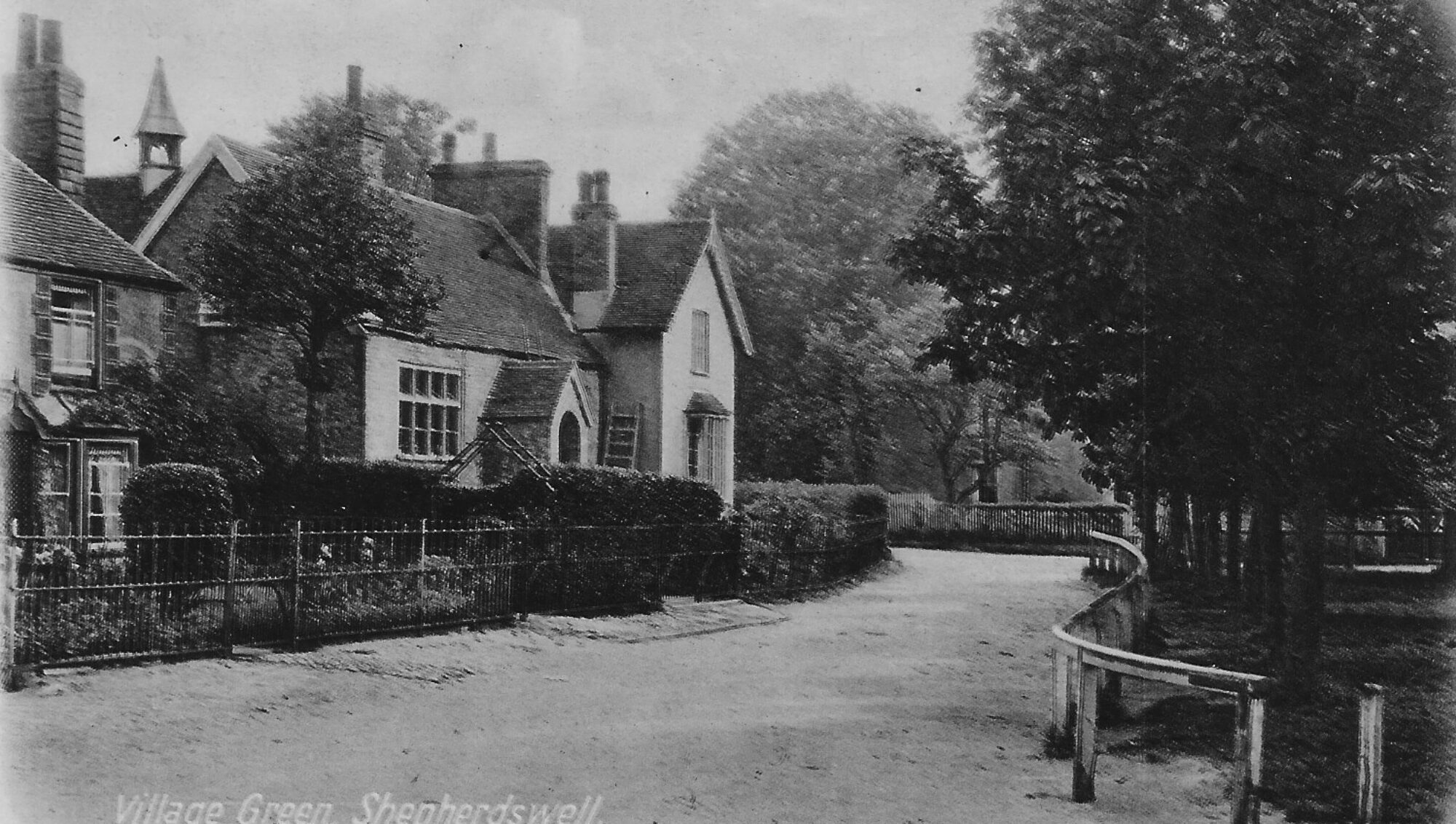HAYNES FARM, LONG LANE / LITTLE HAYNES FARM
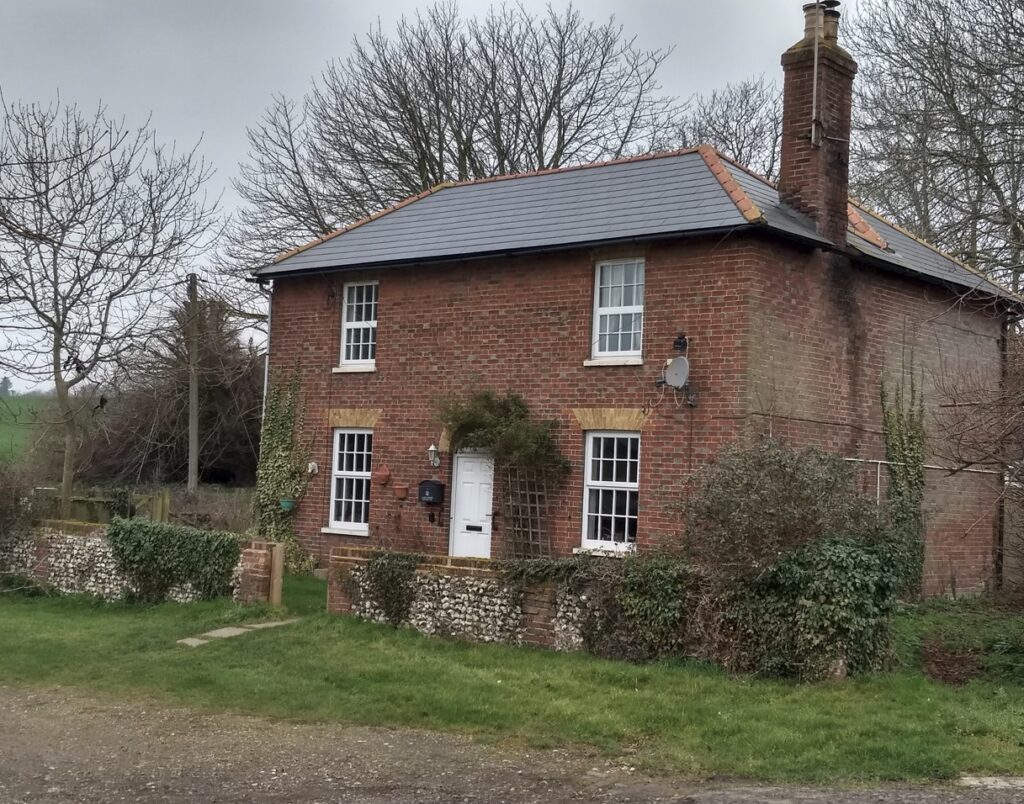
The current farmhouse at Haynes Farm, built after 1841 (photo CH)
Haynes Farm was farmed as a part of the Eythorne Court Estate, which was owned by the Royal Bethlem Hospital from 1689 until the first half of the 20th century.
The tenant farmer resided at Eythorne for most of this time, with the building at Little Haynes being the original farmhouse for Haynes Farm. It was converted into three farm workers’ cottages, subsequently changed to two, and has since been converted back to a single cottage. Until Haynes Farm was sold, records for the individual farm are found together with Eythorne Court Farm.
Evidence for occupation of this part of the parish over many centuries was provided in 1982 when a round bronze age barrow was excavated by Kent Archaeological Society on the farm, in a ploughed field which was known as Forty Acres and Down Wood Bottom in the 1842 Tithe Map.
Occupants of the cottages and the newer farmhouse have been documented in the censuses. They were occupied by farm workers, with the first mention of a tenant farmer, John Fuller, living in the current Haynes farmhouse in 1889, when his daughter was baptised at Shepherdswell.
At Michaelmas in 1890, Edward Dixon was living in one of the properties on the farm. He was employed as a wagoner but stole some wood, coal and coke from John Fuller and was taken for trial. Needless to say, Edward Dixon was not found living on the farm in the 1891 census!
Dover Express 16th January 1891
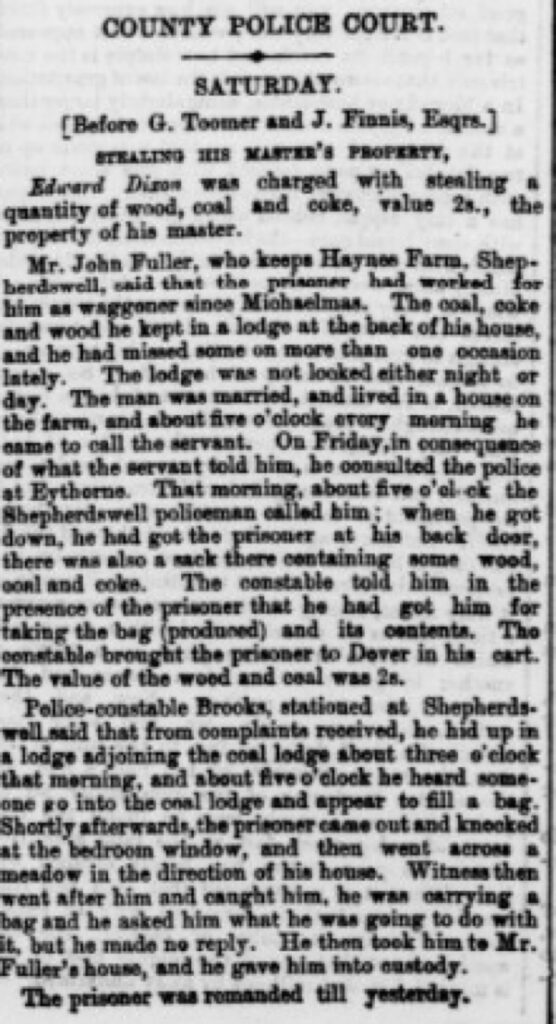
During January 1891, a sudden thaw caused flooding in the farmyard, barns and stables. A horse, six calves and 13 pigs were drowned. The following year, his wife died at the farm, at the age of 34. It is not known when he left Haynes Farm but John would have had very sad memories of his time there.
In 1894, there was an exchange of some of the land between the Governors & Trustees of Bethlem Hospital and the Earl of Guilford’s Settled Estates. Areas marked in green were given to Bethlem and the Earl of Guilford took over those marked in red.
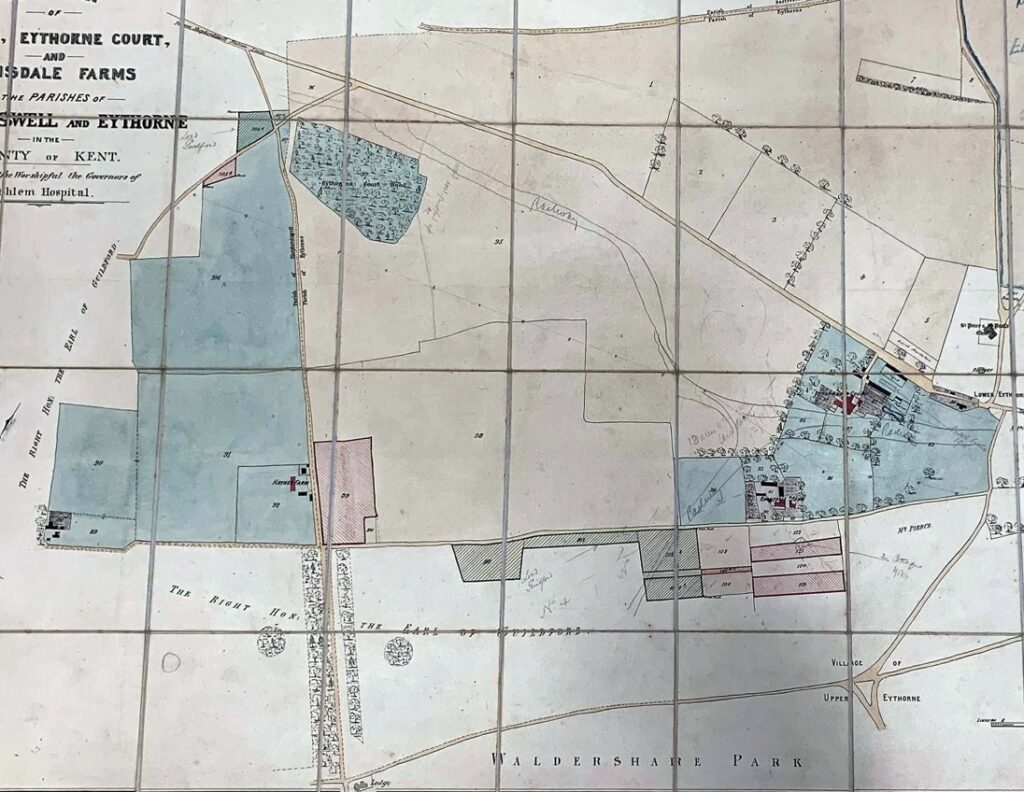
Henry Beviss was noted as the farm steward in an 1899 local directory, but by 1901, Richard Hambrook was the tenant farmer, living with his young family in Haynes farmhouse. His wife died at the farm in 1903, aged only 38, and Richard subsequently remarried. He remained as farm bailiff until at least 1943.
The farm is now run by the Ledger family business. The farm manager, Stephen Price, son-in-law of Douglas Ledger, worked for the Ledgers from at least 1982, winning a highly commended certificate in the Farm Sprayer Operator of the Year finals in 1989, set up to encourage farm spray safety.
Stephen Price was also a witness to what can happen when accidents occur on farms, when he was first on the scene at neighbouring Waldershare Park. A 20-year-old, experienced tractor driver had been working with a tractor, pulling a plough and attached furrow press. Somehow he appeared to have fallen in front of the large right back tractor wheel, with the tractor then running him over and crushing his chest. The tractor and plough carried on moving, eventually burning out it’s clutch and catching fire. It appeared that he had left the ‘parking’ brake off. Stephen saw the fire as he was driving by in his truck, drove across the field and found the man lying face down near the tractor. He tried to help him and summoned help, but he died in the field.
In 1964, Little Haynes (the cottage) was on the market as a residence separate to the farm, and described as a charming, secluded, detached period cottage in a picturesque garden. It was believed to be over 200 years old and was constructed of brick and flint with a slate roof.
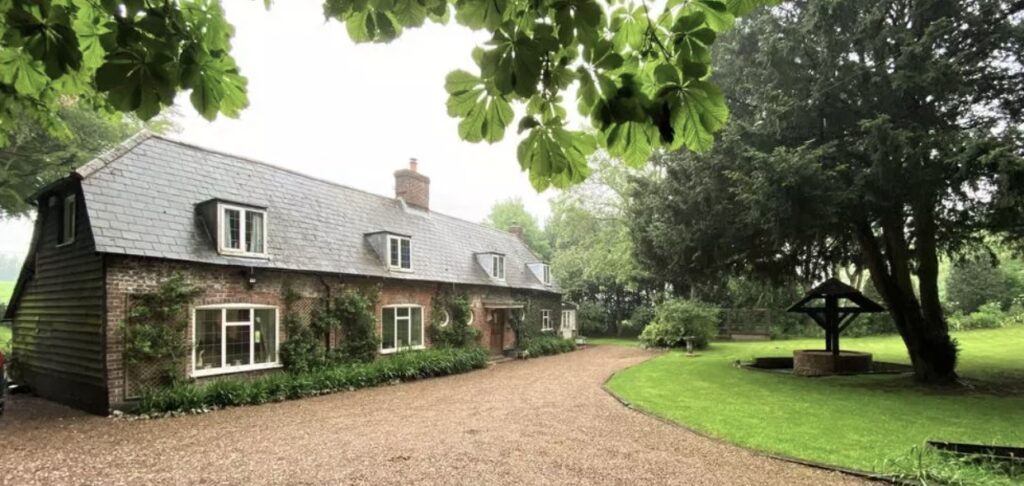
Little Haynes Cottage in 2020
